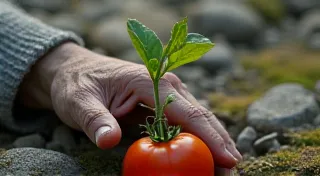Exploring the World's Culinary Heritage: Regional Variations in Cuisine
Food isn't just sustenance; it's a story. It’s a tangible link to history, culture, and the landscape that shaped it. Welcome to a journey through the fascinating world of regional cuisine, where we delve into the unique food traditions of communities across the globe. This website is dedicated to uncovering the narratives woven into every dish, exploring how geography, history, and social structures influence what people eat and how they cook.
From the sun-drenched fields of Sicily to the rugged highlands of Scotland, each region possesses a distinct culinary identity. Our exploration goes beyond simple recipes; we investigate the "why" behind the flavors, the techniques, and the ingredients that define a place’s cooking style. We aim to paint a vibrant picture of how culture expresses itself through the plate, revealing the unseen labor, historical migrations, and environmental adaptations that make each tradition so remarkable.
A Tapestry of Flavors: Stories from Across the Globe
Let's embark on this flavorful journey. Consider the verdant landscapes of Karnataka, India, where the aroma of spices mingles with the salty breeze. Our article, "Beneath the Banyan's Shade: Karnataka's Coastal Cuisine and the Rhythms of the Arabian Sea," explores how the bounty of the Arabian Sea shapes the region’s unique coastal food traditions. The interplay of land and sea influences everything from seafood preparation to the use of local spices, creating a truly distinctive cooking experience.
Moving to the Iberian Peninsula, we uncover the truth beyond the beloved paella. "Beyond the Paella: A Shadow History of Valencian Rice Cultivation and Identity" takes you on a deeper dive into the history of rice cultivation in Valencia, revealing how a humble grain became intertwined with the region’s identity and shaped its culinary landscape. The impact of agriculture on culture is undeniable, and this piece illuminates that profound connection.
The power of chiles extends far beyond adding heat; they've become a potent symbol of identity and resilience. "The Crimson Thread: Chiles and the Narrative of New Mexican Identity" investigates the profound significance of chiles in New Mexican food traditions, demonstrating how a single ingredient can encapsulate a region's history, values, and spirit. This is just one example of how seemingly simple ingredients carry immense cultural weight.
Scarcity can breed incredible ingenuity. In the arid landscapes of the American Southwest, the Navajo people have developed a unique cuisine born of resilience. "The Desert's Alchemy: How Navajo Cuisine Transforms Scarcity into Sustenance" demonstrates the remarkable ability to transform the seemingly barren desert into a source of nourishment, showcasing a deep understanding of the environment and a profound respect for its gifts. Understanding the context of a cuisine—the environmental constraints and cultural priorities—is key to appreciating its true artistry.
From Highland Broth to Silk Road Fusion
The Appalachian region of the United States tells a story of survival and adaptation. "The Echo of Ancestors: How Soil Shapes Taste in Appalachian Cooking" reveals how the challenging terrain and limited resources have shaped the region’s cooking style, with families drawing sustenance from the land and preserving ancient techniques. The soil itself becomes an active ingredient, influencing the flavors and character of the food.
The Silk Road was more than just a trade route; it was a conduit for cultural exchange. "Echoes of the Silk Road: Uyghur Cuisine and the Fusion of Cultures" explores the vibrant and complex food traditions of the Uyghur people, a testament to the power of cultural blending. From Central Asia to China, the flavors reflect centuries of migration and interaction. These influences are palpable in every dish, showcasing the dynamic nature of culture.
The Atlantic Ocean has profoundly shaped the culinary landscape of the Basque Country. "The Emerald Coast's Embrace: Basque Cuisine and its Deep Connection to the Atlantic" dives into the region’s seafood-centric cooking style, emphasizing the importance of sustainable practices and a deep respect for the ocean's bounty. This intimate relationship with the sea defines both the ingredients and the techniques used.
Sicily's citrus bounty isn't just a source of delicious fruit; it's a product of centuries of labor and trade. "From Fields to Feasts: The Unseen Labor in Sicilian Citrus Bounty" sheds light on the often-overlooked story of the people who cultivate these prized fruits, highlighting the human effort behind the exquisite flavors. Understanding the origins of your food is essential for appreciating its true value.
A World of Cultural Narratives
Oaxaca in Mexico is a microcosm of Mexican culinary heritage. "The Gastronomic Tapestry of Oaxaca: Mole as a Narrative of Ancestral Knowledge" explores the intricate art of mole making, revealing how this complex sauce embodies generations of culinary expertise and cultural memory. Mole is more than just a sauce; it's a living history lesson.
Portugal’s food traditions are deeply rooted in its rich history. "The Golden Age of Gastronomy: How Portugal's Past Shapes its Present Plate" investigates how the country's maritime explorations and colonial past have influenced its culinary landscape, creating a diverse and flavorful cuisine. The echoes of Portugal's past resonate in every bite.
The Scottish highlands whisper tales of hardship and resilience. "The Hearth's Legacy: Scottish Broth and the Echoes of Highland Survival" explores the simple yet nourishing art of making broth, demonstrating how a humble dish can embody a community's spirit of perseverance and resourcefulness. This essential dish reflects a history of careful preservation and thoughtful use of available resources.
Provence, France, is synonymous with the intoxicating aroma of lavender and herbs. "The Lavender Fields' Kiss: Provence's Herb-Infused Cuisine and the Essence of Summer" delves into the region’s vibrant flavors, showcasing how the abundance of herbs and sunshine contribute to its distinctive culinary identity. The flavors encapsulate the carefree joy and abundance of the region's summers.
Switzerland’s dairy delights aren’s just delicious; they're inextricably linked to the landscape. "A Pastoral Chorus: The Dairy Delights of Switzerland and the Landscape They Reflect" showcases how the country's lush pastures shape its food traditions, resulting in a unique and satisfying cuisine. The symbiotic relationship between landscape and cuisine is a defining feature of Swiss culture.
The Mekong River sustains life and flavor across Southeast Asia. "The River's Gift: How the Mekong Dictates Flavors in Southeast Asian Rice Paddies" investigates how the river’s influence shapes the cooking styles of communities along its banks, resulting in a diverse range of rice-based dishes and unique flavor combinations. The river is the literal and metaphorical source of sustenance.
Beyond pasta and pizza, Rome hides a wealth of culinary treasures. "Shadows of the Colosseum: Roman Cuisine Beyond Pasta and Pizza" explores the lesser-known dishes of the Roman culinary scene, demonstrating the depth and complexity of the region’s food traditions. There's so much more to discover beyond the tourist staples.
Preserving Cultural Heritage Through Food
Korean kimchi is more than just a fermented vegetable; it’ll be an embodiment of Korean identity. "The Silent Language of Fermentation: Korean Kimchi as a Cultural Keystone" investigates the role of kimchi in Korean culture, highlighting its significance as a symbol of family, tradition, and resilience. The art of fermentation is a key to Korean preservation and flavor.
The Creole palette is a testament to the power of human adaptation. "Spice Routes & Silent Migrations: The Creole Palette as a Cartography of Resilience" explores the diverse influences that have shaped Creole cuisine, demonstrating how migration and cultural exchange can result in a truly unique and flavorful culinary experience. Food becomes a vehicle for storytelling and a symbol of cultural survival.
The Caribbean’s sweet persistence is a reflection of its enduring spirit. "The Sweet Persistence: Candied Ginger and the Enduring Soul of the Caribbean" delves into the history and cultural significance of candied ginger, a beloved treat that embodies the region’s sweet and resilient spirit. A simple treat can carry a profound cultural message.
The tamarind's tang defines the flavors of Southeast Asia. "The Tamarind's Tang: Southeast Asia's Sour-Sweet Legacy and its Culinary Narrative" investigates the role of tamarind in Southeast Asian cooking, highlighting its unique flavor profile and its significance in regional cuisine. From sweet to savory, tamarind’s versatility reflects the dynamism of the region.
Join us as we continue to explore these incredible stories of regional cuisine – stories told through flavors, ingredients, and the dedication of those who preserve these precious culinary legacies. Every dish has a story, and we’re here to help you uncover them.


















